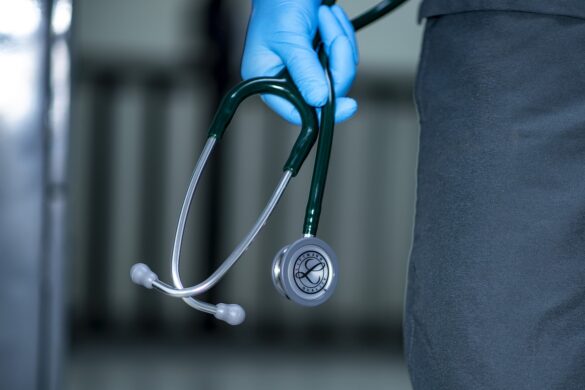
Photo by CC user Benutzer:Alex Anlicker on German Wikipedia
Of all the basic things humans need, water is one of the most commonly discussed resources for both developed and undeveloped countries. Why is that? It seems that other issues such as food and shelter might take precedence over clean water, but when it comes down to it, water is essential. Water is necessary for more than just drinking. Humans need safe water for cooking and washing as well. Wondering why clean drinking water is so important? This article will spell out why this is a critical human need.
Health and Sanitation
It’s not enough for humans to just have access to water; that water must be clean and safe as well. Polluted water can be deadly as it carries many diseases that can lead to sickness and even death. It’s estimated that 1.8 million people die every year of water-related diseases such as cholera. Many water-related diseases are easily preventable with access to clean, safe water.
The United Nations prioritizes access to clean, safe water and defines that access as a basic human right. It’s well-documented that communities without access to clean water are not only subject to illness, but are usually economically poor. These communities have difficulty improving living conditions without first solving the water issue. It’s not enough to have water for drinking and cooking food: it’s also vital to have clean enough clean water for an efficient sanitation system. People need proper washing and sewage facilities to prevent the spread of disease, before the promotion of health can occur.
What Are the Criteria for Safe Water?
There are actually four things that matter when discussing access to water: quantity, reliability, quality and cost. In non-emergency situations, most international organizations agree that every person needs access to between 20 and 50 liters of water per day for adequate drinking, cooking, sanitation and hygiene. The water requirements in emergency situations can be less for a limited amount of time, but eventually, must return to the non-emergency numbers.
Access to water must be reliable and ideally constant regardless of seasonal factors. Areas that rely on water from rainfall or runoff may need to find different sources during certain seasons. When water sources are unreliable or seasonal, it greatly affects each person’s quality of life as well as the entire infrastructure of the area. Natural rivers and lakes can be risky in some areas as they can dry up from seasonal factors or overuse.
It’s not only the source that must be reliable. There must be an adequate and reliable distribution system so that each household can count on clean and safe water. The plumbing infrastructure must be well-designed and work consistently. In some areas, groundwater sources can supplement during times when surface water is inadequate or unreliable. However, this requires the infrastructure to both access and recharge the groundwater in the long term.
Water quality is also a vital consideration. There are several international agencies such as the World Health Organization (WHO) that have well-defined standards for drinking water in relation to chemical, radiological and microbial characteristics. For example, water with a high amount of microbial contamination from pollutants, waste or industrial chemicals isn’t considered safe as it may cause disease. Water quality must monitored continuously as contamination can occur in many stages of the water transfer. The source can be polluted and a poorly-designed distribution system can also introduce contaminants. Storing water can also be problematic if not done properly.
Cost is another important factor. A reliable source of clean water doesn’t make much difference if people can’t afford the water. There are both monetary and time elements to cost calculations. If it’s not possible for water to be distributed affordably to a person’s home, he or she must be able to access it in a timely manner from a local source. Without proper infrastructure, people must purchase water from a refilling station or buy bottled water for drinking and cooking.
Possible Solutions
While it may seem that these water issues only exist in poor and/or developing countries, the truth is that many people in first-world countries have difficulty finding affordable access to clean, safe water. For example, Southern California has long had issues with drought and insufficient supply. With the demand continuing to grow, water is becoming such a limited commodity that people are struggling to afford it, even in places where it’s available. Fortunately, innovative solutions such as the Cadiz Water Project are starting to appear. If projects like this are successful long-term, the technology might work in other areas.
With all the technological advances happening everyday, those relating to water distribution are arguably the most important. Reliable access to clean water is something every human should have throughout his or her entire life. Sadly, there are many areas of the world where this is not the case. As awareness grows, more aid funds are applied to creating water solutions for people all over the world. Innovations for harvesting and storing water are also extremely important, as they could pave the way for a future world where everyone has enough clean water all the time.









